Photos That Capture The Essence of The 1960s and ’70s
The 1960s and '70s were decades of promise, change, and political and social turmoil. These years helped birth a generation of free thinkers and activists who helped paved the way for the way our world is today. From the beatniks reading poetry in underground coffee shops to disco-lovers dancing the night away, take a look at the photos that help illustrate the United States as it was in the 1960s and '70s.
Allen Ginsburg Leads the Beatnick Movement

This is a picture of one of the leading figures of the Beat Movement, Allen Ginsberg, hanging out with some other beat poets in 1965. The Beat Movement was a youth subculture that attracted those with a creative deposition such as poets, writers, artists, musicians, and everything in between. Although the movement was existent in the 1950s, it wasn't truly established in the United States in the early 1960s.
When it came to style, the beatniks had their own look. They kept it simple with dark clothes and articles of clothing such as narrow black pants, black t-shirts, and turtlenecks with a lot of Parisian influence. A cigarette was a must and a beret was optional. It was their Bohemian lifestyle and outlook on society that would eventually develop into the hippie movement of the later 1960s.
Festival Goers Enjoying The Moment

Here, a group of hippies blows bubbles at the Isle of Wight Pop Festival in 1969. During the late 1960s, young Americans began to dress down. Replacing slacks for jeans and shoes for bare feet, the hippie movement was underway. College students and young adults saw the once popular way of dress as a social construct. In San Francisco, the hippie movement was born with young professionals, artists, and musicians adapting to a Bohemian lifestyle wearing theatrical costumes and wearing used or vintage clothing.
They were looking to create a sense of individuality and creativity out of their clothes to express themselves by not shopping at department stores and going against the typical idea of the American Dream.
The March On Washington

In August 1963, 250,000 people gathered in front of the Lincoln Memorial in Washington D.C for what is known as the March on Washington for Jobs and Freedom. The event was orchestrated by Dr. Martin Luther King who gave his famous "I Have a Dream Speech."
The point of the march was to draw attention to the inequalities faced by African Americans that were still occurring over a century after the emancipation of slaves. President JFK even endorsed the March on Washington although reluctantly for fear of safety issues with the crowds and the energy of those protesting on either side.
Beatlemania
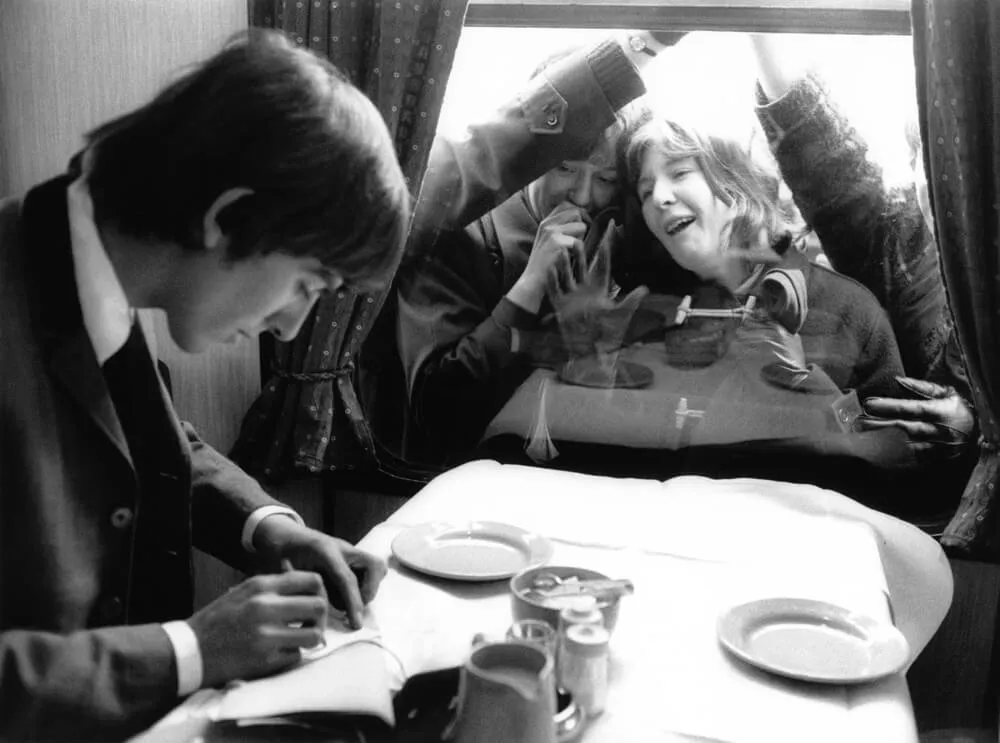
Beatles member George Harrison sits on a train during the filming of A Hard Day's Night as fans look through the windows trying to get a glimpse of him. Beatlemania was an intense fan frenzy over the rock group the Beatles in the 1960s. The phenomenon started in 1963 and lasted all the way up until the band's official break-up in 1970.
During this time, the Beatles were constantly being swarmed any time they were out in public, with fans bursting into tears over catching a glimpse of them in real life.
Dylan and Baez Preach Civil Rights

Here is an image of young folk singers Bob Dylan and Joan Baez performing together during the March on Washington civil rights rally on August 28, 1964. Both Dylan and Baez went on to become icons for the civil rights movement and the '60s generation. Most of Dylan's most celebrated work comes from the 1960s.
He was even named "voice of a generation" during this time as his songs became anthems for the Civil Rights and Anti-war movement. Both had incredibly successful music careers throughout the decades and are still alive today.
The JFK Assassination Changed The Nation

This is a photograph taken on the day of President John F. Kennedy's assassination. President Kennedy and his wife smile and wave at the crowds that are surrounding their motorcade in Dallas, Texas on November 22, 1963. Not too much later, while passing through the Dealey Plaza, he was fatally shot by former U.S. Marine Lee Harvey Oswald.
Kennedy's death was the fourth and most recent United States presidential assassination. It's common for people who were alive at the time to remember exactly where they were when they heard that Kennedy had been assassinated.
Earthrise Changed The Way People Saw The World

This revolutionary picture was taken on Christmas-eve of 1968. It is a photograph of the Earth as well as some of the Moon's surface taken from lunar orbit by astronaut Bill Anders during the Apollo 8 mission. Galen Rowell, a nature photographer, declared it is "the most influential environmental photograph ever taken" because it was something that most people had never seen before and helped put our place in the universe into perspective.
Before this color photo was released, mission commander Frank Borman took a black-and-white picture of the scene until William Anders brought out the color film.
The Temptations in New York, 1965

Here, the Temptations pose for a group portrait in New York in 1965. The Temptations were a vocal group that released a series of successful singles and albums with Motown Records throughout the 1960s and '70s. Their producer Norman Whitfield helped pioneer psychedelic soul and grew the band immensely, making them the face of R&B and soul music. They were best known for their choreography, distinct harmonies, and stunning wardrobes.
Together, they sold tens of millions of albums, making them one of the most successful groups in music history. Some of the band's biggest hits include songs such as "My Girl," "Ain't Too Proud To Beg," and "I Wish It Would Rain."
Lyndon B. Jonson Signs the Voting Rights Bill

After John F. Kennedy's assassination, Vice President Lyndon B. Johnson took over the presidency along with all of the issues facing the country at the time. Here, Lyndon B. Johnson can be seen signing the 1965 Voting Rights Act in the Presidents Room at the U.S Capitol. The Voting Rights Act was a major piece of federal legislation at the time because it prohibits racial discrimination in voting in the United States.
The Act secured the voting rights of racial minorities, particularly in the South. Today, it is still considered to be the most effective piece of civil rights legislation ever enacted in the United States.
Sonny & Cher - The Power Couple

Sonny and Cher were an American pop music duo. The two were married and reached their height of success in the 1960s and '70s. The couple began their career in the mid-'60s as backing singers for producer Phil Spectre until they started their own duo career. In 1965, the two achieved fame with their first two hit songs "Baby Don't Go" and "I Got You, Babe." The two released three albums and two soundtracks to not as successful films.
They went on as TV personalities in the 1970s although their career duo ended in 1975 in divorce. Cher went on to lead a successful solo career and Sonny was elected to Congress as a Republican Representative from California. He passed away in 1998 in a skiing accident.
Woodstock Was The Essense of the Sixties
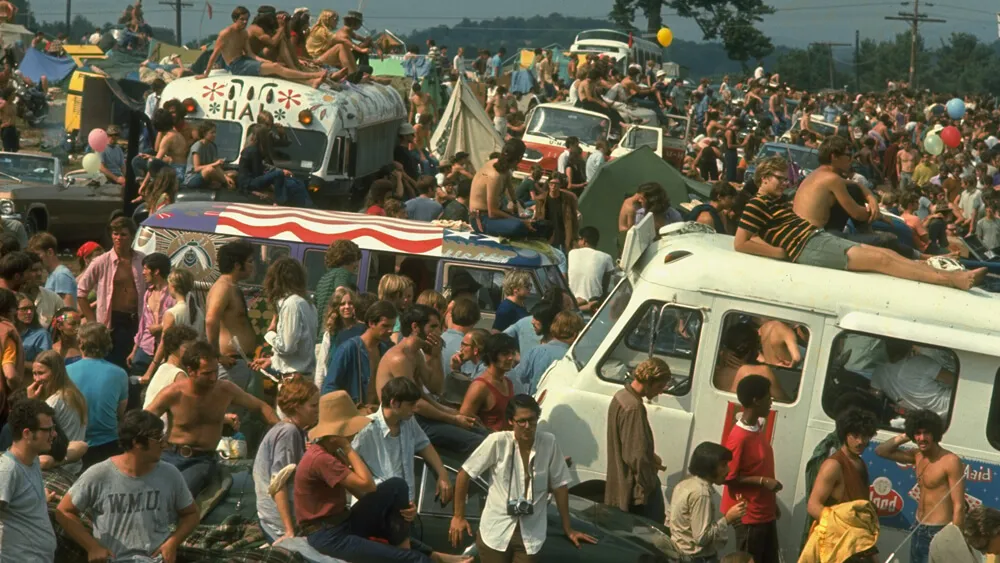
These Woodstock Festival attendees are packed together taking in the music and the experience together. The Woodstock Music & Art Air took place on a dairy farm in the Catskill Mountains of southern New York State from August 15 -18. It was attended by over 400,00 people with 32 acts performed outdoors.
Widely considered as the most pivotal moment in popular music history, it has also paved the path for today's' counterculture, as much of it based off of the same ideals and a desire to replicate similar experiences. In 2017, the site of the original festival was listed on the National Register of Historic Places.
Easy Rider Was Defined A Movement
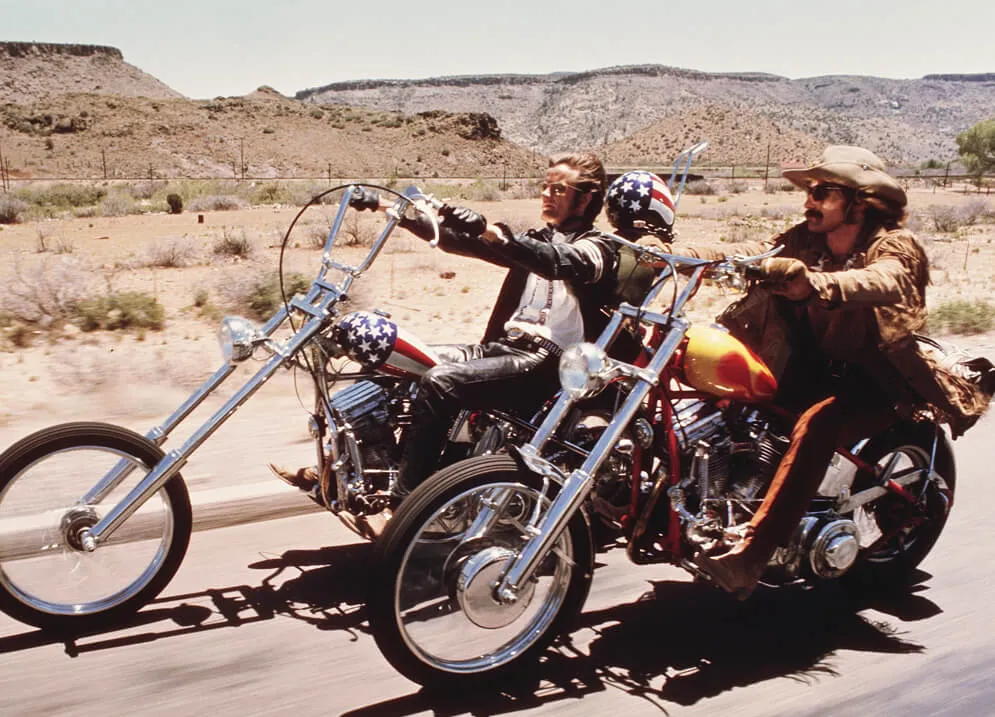
Easy Rider is an independent road drama film written by Peter Fonda, Dennis Hopper, and Terry Southern. Fonda and Hopper play two bikers in the American Southwest and South in possession of the profit from a big drug deal. Released in 1969, the success of the film brought about the New Hollywood era of film during the early 1970s.
Aside from its success, the film is recognized as a cult classic and a staple of the counterculture movement in the United States with a lot of focus on the hippie movement, drug use, and communal living. It has also been revealed that real drugs were used in scenes that portrayed drug use demonstrating the attitude of the time.
Dolly Parton Was The Country Queen

Here, country singer Dolly Parton poses for a photo in front of her tour bus before performing in Detroit Michigan in 1977. Along with her country music career, Parton was also a record producer, actress, author, and philanthropist. She released her debut album Hello, I'm Dolly in 1967.
Although she saw success in the late 1960s, her country music career reached its height during the 1970s and even into the 80s. She is the most honored female country singer of all time with 25 songs reaching the No. 1 spot on the Billboard country music charts.
Anti-War Demonstrations
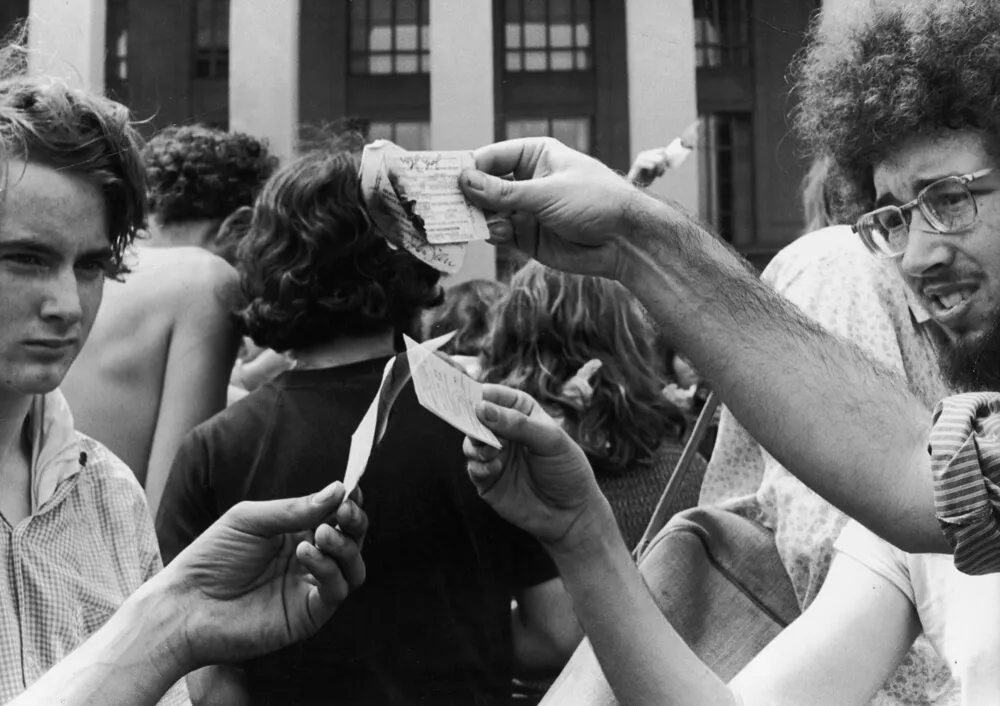
A group of young men burns their draft cards at the steps of the Pentagon to protest the Vietnam War. Protests against the Vietnam War occurred frequently across the United Steps during the 1960s and '70s to demonstrate the public's strong disagreement against the war and the draft that was enacted.
The movement began small among peace activists and on college campuses, yet gained national attention in 1965 after the United States had begun bombing the North Vietnamese. After the launch of the Tet Offensive by the North Vietnamese troops and its success against the South Vietnamese and U.S., disapproval rating against the war showed that 50 percent of the American population disagreed with America's involvement.
Women's Liberation Movement
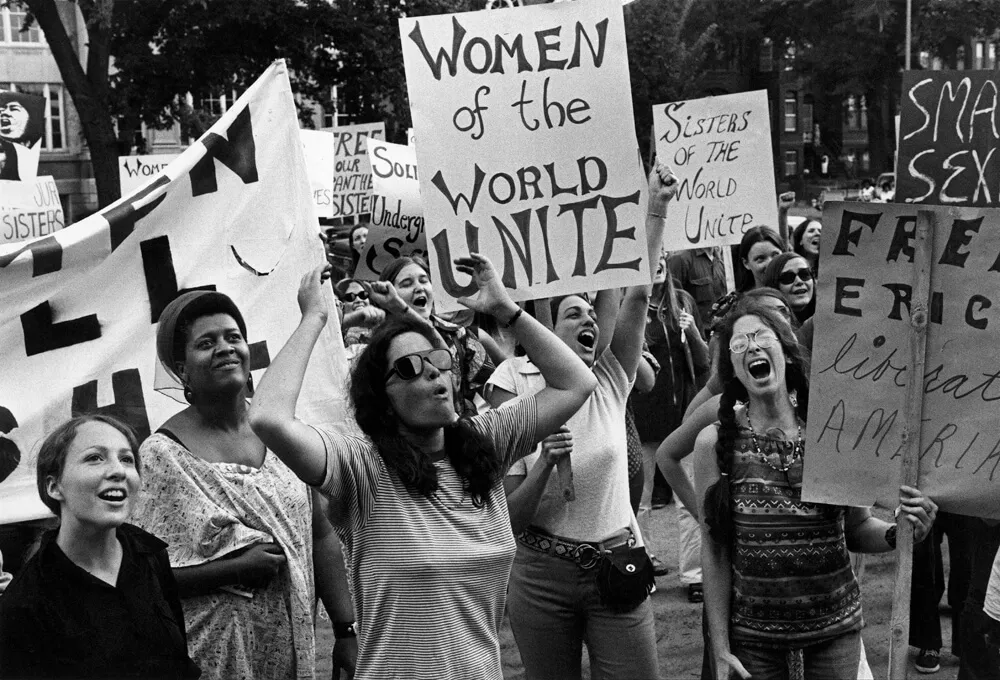
Women march the streets protesting for women's rights and encouraging feminism throughout the country and wold. During the 1960s and into the '70s, there was a massive feminist movement in the United States. Overall, their goal was to create equality between the genders with emphasis on workplace inequality.
Sparked by the Civil Rights Movement, it encouraged women to speak out against the discrimination occurring between genders as well as the ongoing fight regarding birth control, abortions, and any manner of issues that females regularly have faced.They formed organizations and hosted marches and protests for a series of decades.
The 1973 Oil Crisis

Known as the "First oil shock," the 1973 oil crisis began in October 1973 when the members of the Organization of Arab Petroleum Export proclaimed an oil embargo. The embargo was targeting the nations they thought were in support of Israel during the Yom Kippur War. Originally, it was aimed at Canada, Japan, the United Kingdom and the United States, but eventually extended to Portugal, Rhodesia, and South Africa.
At the end of the embargo, the price of oil had risen from $3 a barrel to $12 globally, and even higher in the United States. The embargo had harsh short-term and long-term effects on global politics and the economy. Another oil crisis occurred in 1979 and is referred to as the Second oil shock.
David Bowie As Ziggy Stardust

David Bowie poses for a picture dressed as his alter ego Ziggy Stardust in 1973. Bowie was a singer, songwriter, and actor. During his career, he was one of the leading figures in popular music and had a career that spanned over five decades. Known for his otherworldly stage performances and visual presentation, he is credited with influencing many different artists.
During his lifetime, he sold over 140 million albums worldwide and is one of the best-selling musicians of all time. After some experimentation, he re-emerged as Ziggy Stardust in the 1970s after the success of his single "Starman" and The Rise and Fall of Ziggy Stardust and the Spiders From Mars. He passed away in January 2016 after a long battle with liver cancer.
The Partridge Family Was The Seventies

The Partridge Family was a musical sitcom that starred Shirley Jones and David Cassidy. The show focused on a widowed mother and her five children that embark on a musical career together. The show ran from September 25, 1970, until March 23, 1974, on ABC as part of the Friday night lineup. David Cassidy and Shirley Jones were the only two that were actually featured on the recordings which led to Cassidy becoming a teen idol.
The producers signed him to a solo act and he began touring while playing Partridge Family songs as well as his hits from his own albums. The show also produced the hit "I Think I Love You" which reached No. 1 on the Billboard Hot 100.
Led Zeppelin Conquered the Seventies
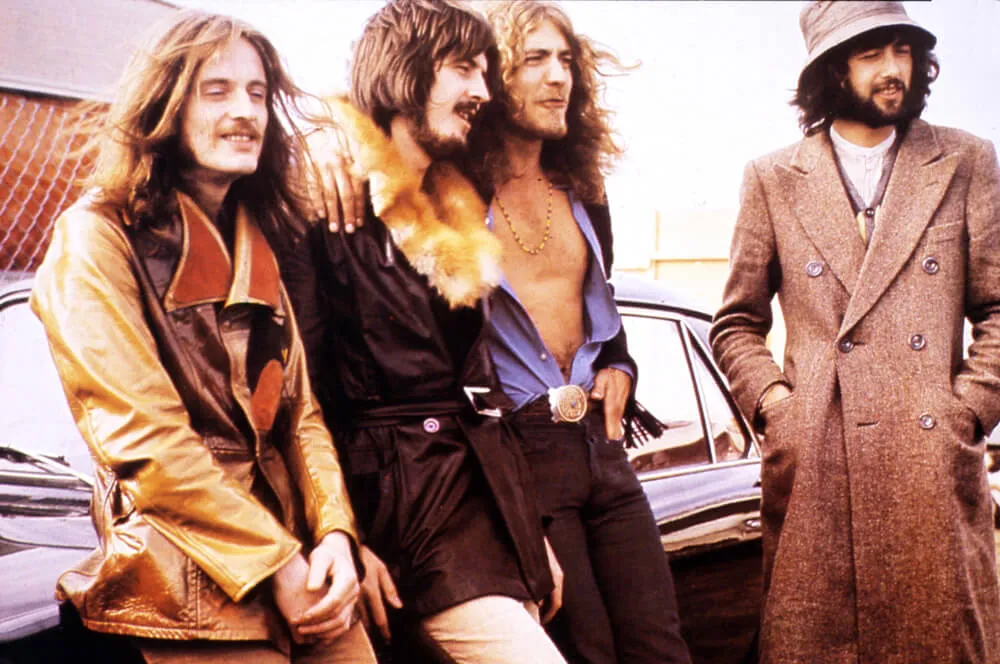
The members of Led Zeppelin lean against a car in Australia in 1970. Led Zeppelin was an English rock and roll band that formed in London in 1968. The band's style and energy have given them the credit for being a forerunner of heavy metal music. After changing to Atlantic Records, the band experienced much success releasing albums Led Zeppelin 1 -1 IV, Houses of Holy, and more.
Their worldwide success and impact on music have established them as one of the most successful and influential rock and roll groups of all time. Rolling Stone has even gone so far as to describe them as "the biggest band of the Seventies."
The Age Of Disco
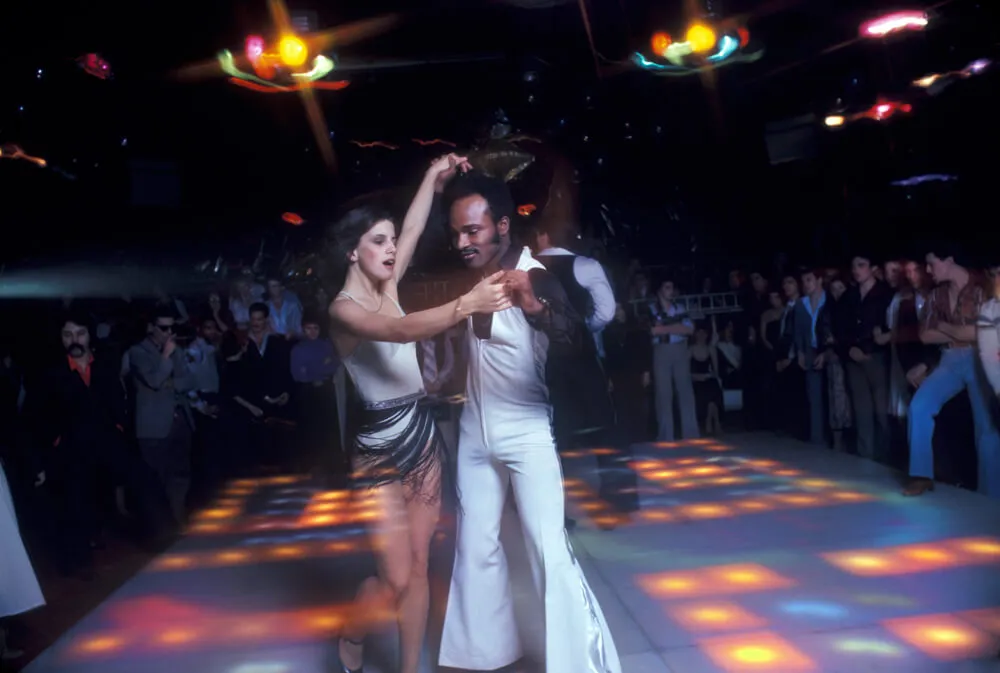
A couple dances at the disco club 2001 Odyssey in Brooklyn, New York in 1979. Disco is a music style that originated in the mid-'70s and carried well into the '80s. A culture began to form out of the American nightlife scene when people were throwing their own disco house parties or setting up makeshift discotheques.
The music style then became popular on the radio and among club-goers in major cities. Disco was seen as a reaction against the rock and roll scene and by the 1970s, a disco scene was well underway with a booming drug culture and a specific group that identified with the lifestyle.









